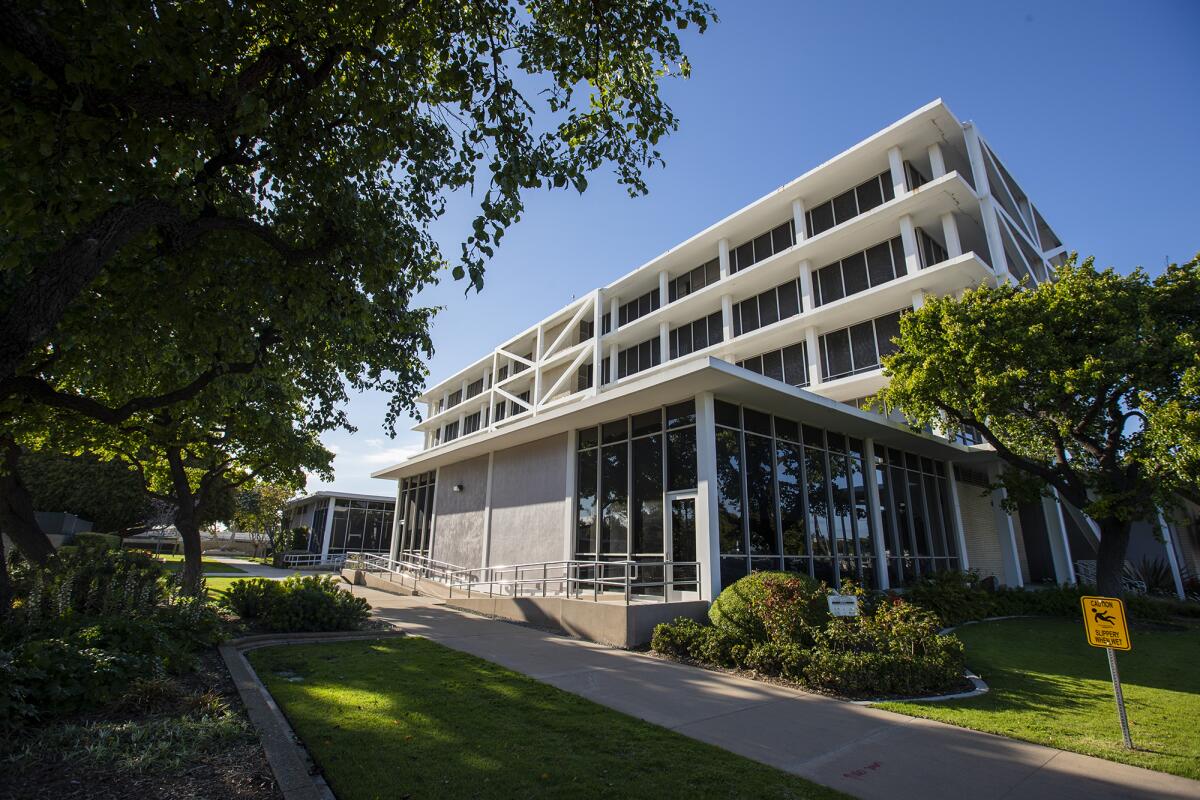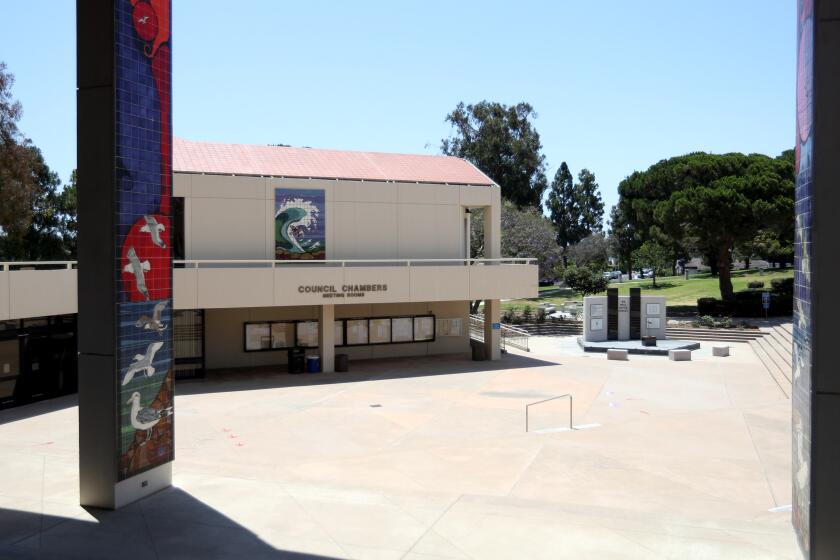Costa Mesa mulls a balanced budget proposal for 2024-25, but is it really balanced?

- Share via
Costa Mesa officials this week considered the city’s financial future, reviewing a 2025-26 budget proposal that appears to be fully balanced but which assumes a nearly $7 million mandated earmark for capital projects would go unfulfilled.
With the theme “Focused. Efficient. Resilient,” the $224.4 million all-funds budget projects $186.9 in general fund revenue — a $3 million decrease from anticipated revenues forecast in the 2024-25 budget adopted last June — but still sets aside $101.7 million for public safety.
Finance officer Peter Diminich said in a study session Tuesday trends and forces in the national economy, particularly a series of proposed international tariffs, are creating a cloud of uncertainty among consumers that could play out locally in the months and year ahead.
“It’s negatively impacting the soft data, and soft data are things like consumer confidence and things with opinions and survey-based data. In the near term, we’re seeing a negative bias there,” Diminich told the council members, indicating confidence levels were as low as they were during the COVID pandemic.
Locally, Costa Mesa is projected to take in about $75.1 million in sales tax, $6.4 million lower than this year’s budget, and an estimated $63 million in property taxes, an increase of 4%.
Revenue from collected fees and charges should bring in $13.2 million, while the city is anticipating $9.8 million from an 8% transient occupancy tax levied on hotel stays and $3.6 million from the 7% tax on retail cannabis sales.
Using the dedicated capital project funding brings Costa Mesa out of compliance with its own capital asset needs (CAN) ordinance, written to ensure projects continue. But with an even bigger shortfall looming in 2025-26, could the CAN be on the chopping block?
The cannabis tax revenue will help raise $242,200 to fund the city’s Arts and Culture Master Plan, the expenses of which this year are anticipated to be $416,990. Another $242,200 will be put toward a first-time homebuyers program that will have amassed $628,912 by next July.
Meanwhile, among $186.9 million in expenditures 54% will go to public safety, with 33.6% going to Costa Mesa Police Department and 20.8% planned for the city’s fire department.
A proposed all-funds capital improvement program budget of $16.7 million represents a decrease of $11.2 million, or 40%, from the adopted 2024-25 budget. Another $12 million in bond funding, separate from the general fund, is anticipated to be spent sometime later this year for the renovation of the city’s Fire Station No. 2.
Other capital improvement projects anticipated in the year ahead include active transportation improvements on Adams Avenue, bicycle and pedestrian infrastructure upgrades, new security lighting in parks throughout the city and a pedestrian safety festival.
But the commitments fall short of the 5% of general fund revenue that is mandated to be earmarked for such projects under the city’s Capital Asset Needs (CAN) ordinance, passed in 2015.
Molina on Tuesday recommended the city allocate $2.2 million in funds that have accumulated from prior payments into the capital improvement fund toward infrastructure projects, but indicated she will be recommending the city seek an exemption from the mandates of the CAN ordinance, which would require a nearly $7 million set-aside.
“We are, at this moment in time, requesting to enact an emergency exception clause, due to the economic downturn, which would need the super-majority approval of the City Council,” Molina said.
The council recently approved a similar exemption in the current fiscal year, using $2.9 million to close a budget gap and voting to replenish the CAN fund incrementally over the next five fiscal years. Should council members make a similar move in 2025-26, the city would be on the hook for nearly $10 million in repayment to the fund.
Mayor John Stephens — who indicated he would have voted against the CAN ordinance if he’d been on the council in 2015 — said he believes the city should either adhere to the ordinance or consider amending it or repealing it altogether.
“We’re going through an exercise, but it’s not realistic. I’m dubious that we will be able to perform what we’re putting out as a plan,” he said. “If it is a law, I think we’ve got to follow it and be genuine about it.”
Council and staff mulled other ways to increase the city’s revenues, including potential fee increases at its Golf Course and Tennis Center, revising Costa Mesa’s fee schedule and floating a ballot measure in 2026 to increase the transient occupancy tax.
They also considered ways to decrease expenditures by possibly cutting more vacant positions, reducing consultant contracts and revisiting multiple programs in the 2025-26 mid-year budget revision process.
“I really appreciate the thoughtful consideration given, given our economic downturn and a lot of uncertainty ahead,” Councilwoman Arlis Reynolds told staff. “I also appreciate that the budget was developed to not use our [$60 million] reserves. We don’t know what’s ahead and I’d like to have a little bit of a buffer.”
All the latest on Orange County from Orange County.
Get our free TimesOC newsletter.
You may occasionally receive promotional content from the Daily Pilot.







